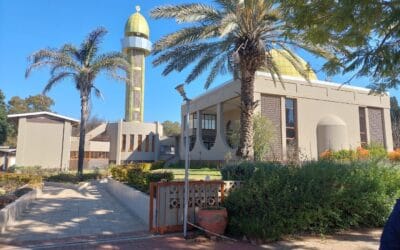The eight Sudanese-style Musjids
-
The eight Sudanese-style Musjids located in Tengréla, Kouto, Sorobango, Samatiguila, Nambira, Kong, and Kaouara are characterized by earthen construction, projecting frameworks, vertical buttresses crowned with pottery or ostrich eggs, and high or low minarets in the form of a truncated pyramid. They present an interpretation of an architectural style that originated between the 12th and 14th centuries in the city of Djenné, which was then part of the Mali Empire and whose prosperity came from the trade of gold and salt across the Sahara to North Africa. It is especially from the 15th century that this style spread southwards, from the desert regions to the Sudanese savannah, adopting lower forms with stronger buttresses, to meet the requirements of a more humid climate. These Musjids are the best preserved of the twenty that have survived in Côte d’Ivoire, out of several hundred that still existed at the beginning of the 20th century. The Sudanese style that characterizes these Musjids, and which is unique to the savannah region of West Africa, developed between the eleventh and nineteenth centuries, when Islamic merchants and scholars spread southward from the Mali Empire, extending the trans-Saharan trade routes into the woodlands.
-
The Musjids are not only very important physical evidence of the trans-Saharan trade that fostered the expansion of Islam and Islamic culture, but are also a tangible expression of the fusion of two architectural forms that have endured over time: the Islamic form practiced by the Arab-Berbers and that of the indigenous animist communities.
-
One of the best places in Côte d’Ivoire to see the West-Sudanese style mud-and-stick Musjids, that generally Mali and Burkina Faso are famous for, is in the small town of Kong. Heading this far north simply for the Musjid might be to oversell it, but it’s a good stop en-route to either Korhogo or Comoé National Park. West-Sudanese Musjids are notable for being constructed solely of mud mixed with straw. Rather than holding the structure together, the wooden sticks are used for decorative and practical purposes, functioning as the scaffold when, after the rains, a new outer layer of mud has to be added to the building. The Kong Musjid, also known as the Grand Musjid of Kong, or Missiriba, is the earliest sign of the Islamization of the inhabitants of the Northern Ivory Coast.
-
It was constructed in neo-Sudanese style using mud and logs, and it continues to serve as a place of worship and gathering until now.
-
The current Musjid in Kong is from the early 1900s but designed after an original Musjid built on the spot in 1740.








